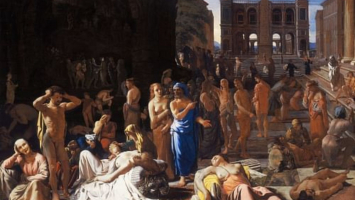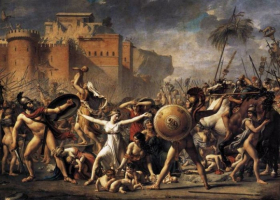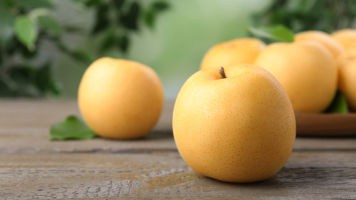Top 6 Most Famous Cuisines of Ancient Rome
The cuisine of ancient Rome evolved significantly during the course of the civilization's existence. Political changes from kingdom to republic to empire ... read more...influenced dietary patterns, as did the empire's massive expansion, which exposed Romans to many new provincial culinary habits and cooking methods. Here are the most famous cuisines of Ancient Rome.
-
From 123 BC, the Roman Empire issued a ration of unmilled wheat (as much as 33 kg) to as many as 200,000 people each month, known as the frumentatio. There was formerly a charge for this, but it was repealed in 58 BC by the plebeian tribune Publius Clodius Pulcher. Individuals receiving the frumentatio had to be citizens and residents of Rome.
Flat, round loaves made of emmer (a cereal grain closely related to wheat) with a bit of salt were originally eaten; among the upper classes, eggs, cheese, and honey, as well as milk and fruit, were also consumed. Wheat bread was introduced during the Imperial period, approximately 1 AD; over time, more and more wheat meals began to replace emmer loaves. There were various types of the bread of varying quality. White bread was traditionally cooked for the wealthy, with darker bread baked for the middle class and the darkest bread baked for the destitute peasants. The bread was occasionally dipped in wine and served with olives, cheese, and grapes.
There were at least 33 bakeries in Pompeii at the time of its collapse in AD 79. Sweet buns scented with blackcurrants were created by Roman chefs, as were cheesecakes made with flour, honey, eggs, ricotta-like cheese, and poppy seed. Honey, reduced red wine, and cinnamon were used to make sweet wine cakes. Fruit tarts were popular among the upper classes, but the poorer classes couldn't afford to prepare them themselves or buy them from markets and sellers. Apicius, a late 4th or early 5th-century Roman recipe book, defined Juscellum as a soup containing grated bread, eggs, sage, and saffron.
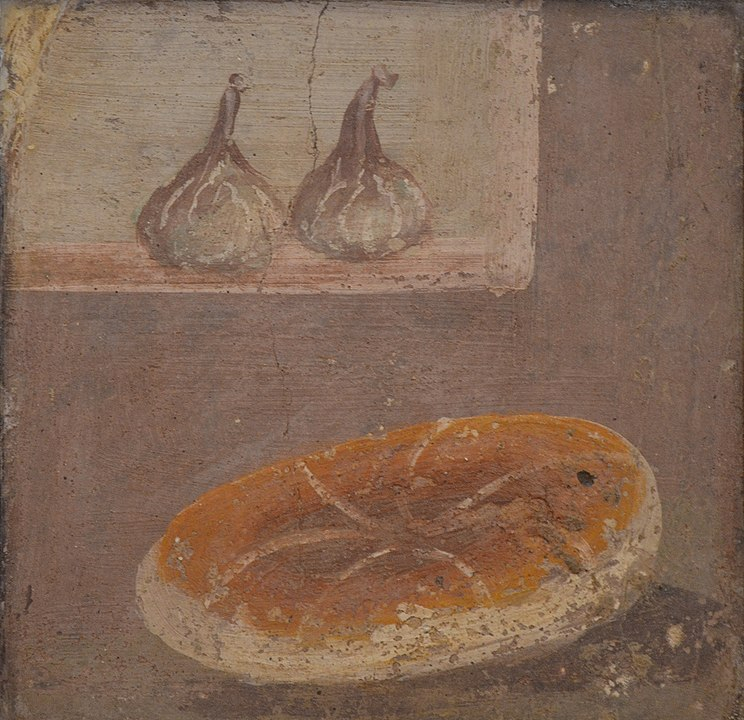
en.wikipedia.org 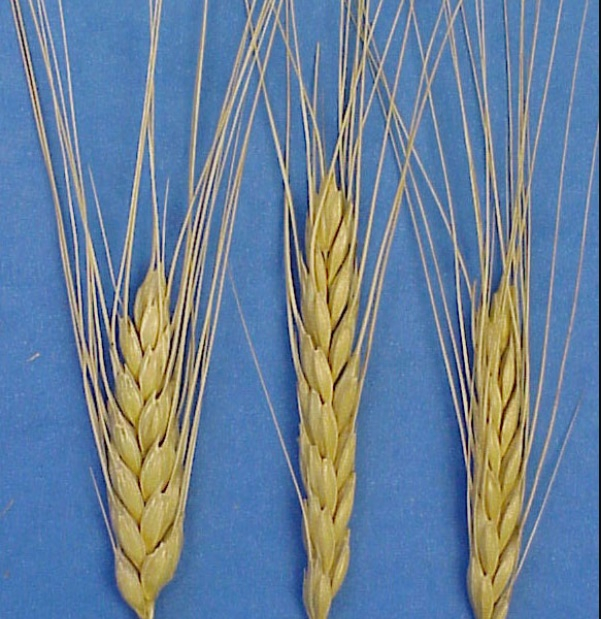
Emmer -en.wikipedia.org -
One of the most famous cuisines of Ancient Rome is wine. Ancient Rome was essential in the history of wine. The ancient Greeks and Etruscans were the first to have an impact on Italian peninsula winemaking. The rise of the Roman Realm witnessed both scientific breakthroughs and a growing understanding of winemaking throughout the empire. The history of today's key winemaking regions in France, Germany, Italy, Portugal, and Spain has been profoundly influenced by Rome.
Because fermentation was uncontrolled and the alcohol content was high in Ancient Rome, wine was usually diluted with water before consumption. The wine was occasionally altered and enhanced by its makers: instructions for making white wine from red wine and vice versa, as well as for saving wine that is turning to vinegar, have survived. These instructions, along with precise descriptions of Roman winemaking, dating back to 160 BC in the first known Latin literary document.
The wine was also flavored in various ways. There was passum, a powerful and sweet raisin wine whose earliest known recipe is of Carthaginian origin; mulsum, a newly prepared mixture of wine and honey (called a pyment today); and conditum, a pre-made and matured blend of wine, honey, and spices. Conditum Paradoxum is a recipe for a prepared and stored blend of wine, honey, pepper, laurel, dates, mastic, and saffron. Another recipe called for the wine to be infused with seawater, pitch, and rosin. According to a Greek traveler, the beverage was reportedly an acquired taste. Posca (sour wine combined with water and herbs) was a favorite lower-class drink and a staple of the Roman soldier's ration.
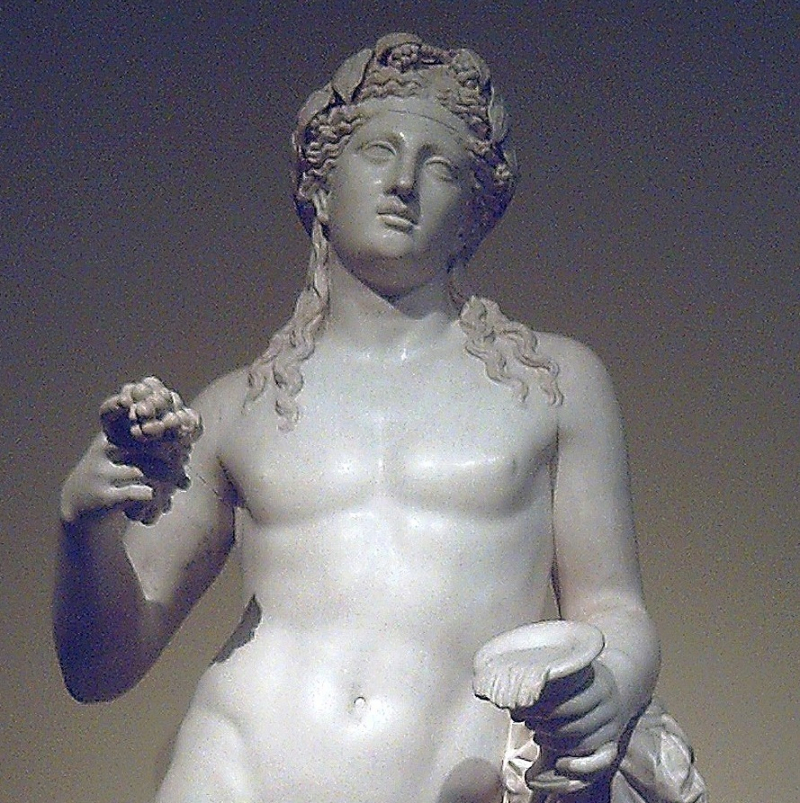
A Roman statue of Bacchus, god of wine -en.wikipedia.org 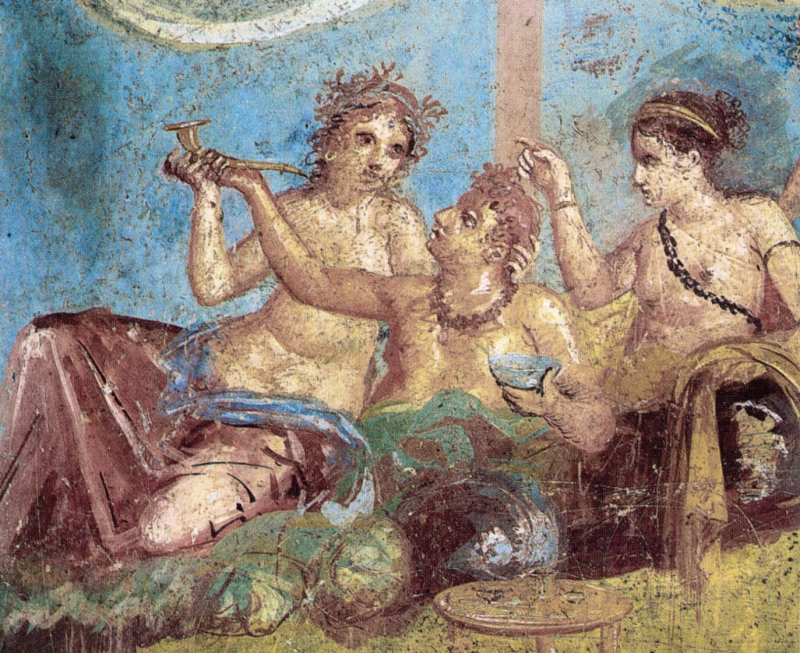
a banquet scene from Pompeii -en.wikipedia.org -
Butcher's meat was a rare luxury. Pork, particularly sausages, was the most popular meat. Beef was uncommon in ancient Rome, but more prevalent in ancient Greece; neither Juvenal nor Horace mention it. More commonly seen were seafood, game, and poultry, particularly ducks and geese. In his victory, Caesar, for example, served a public feast to 260,000 poorer people that included all three of these delicacies but no butcher's meat. According to John E. Stambaugh, meat "was scarce except for sacrifices and the supper feasts of the rich." Cows were valued for their milk, while bulls were valued as plow and draft animals. Working animal meat was rough and unappealing. The veal was consumed on occasion. Apicius provides only four recipes for beef, but the same recipes include variations for lamb or hog. There are just two recipes for beef stew and veal scallopini.
Dormice were considered a delicacy and were eaten. Wealthy Romans considered it a status symbol, and some even had dormice weighed in front of dinner guests. A sumptuary rule passed under Marcus Aemilius Scaurus prohibited the consumption of dormice but did not put an end to the practice.
The meat was less prevalent than fish. Aquaculture has advanced to the point where large-scale companies devoted to oyster cultivation existed. The Romans also practiced snail and oak grub farming. Some fish, such as mullet raised at the Cosa fishery, were highly valued and sold for high prices.
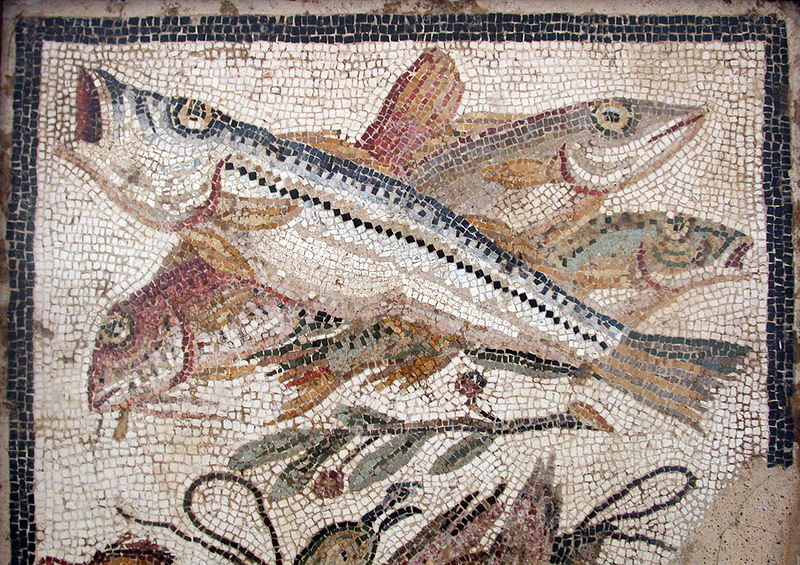
inromecooking.com 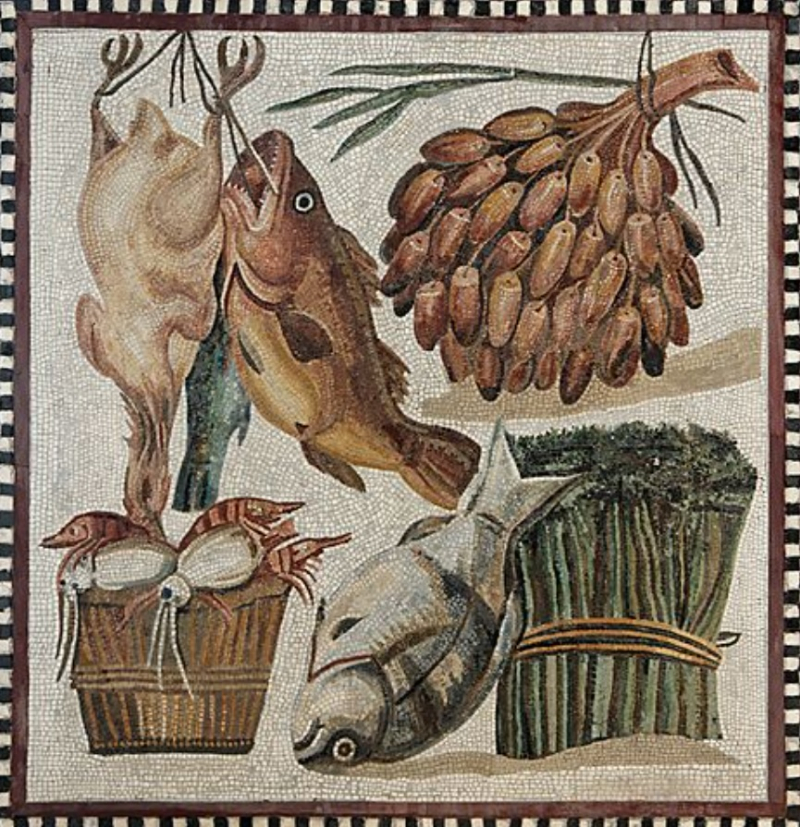
empirerome.com -
When the fruit was in season, it was eaten fresh, and it was dried or preserved for the winter. Apples, pears, figs, grapes, quinces, citron, strawberries, blackberries, elderberries, currants, damson plums, dates, melons, rose hips, and pomegranate were among the most popular fruits. The more exotic azeroles and medlars were less prevalent. Cherries and apricots were popular when they were introduced in the first century BC. Peaches were brought from Persia in the first century AD. Oranges and lemons were known, but they were employed for medicinal purposes rather than cooking. Lemons were not cultivated in Italy until the Principate, despite being known to the ancient Romans. In Rome, at least 35 pear cultivars and three apple varieties were grown. There are recipes for pear and peach creams, as well as milk puddings with honey, pepper, and a hint of garum. Columella, a prominent writer on agriculture in the Roman Empire, suggests preserving figs by mashing them into a paste with anise, fennel seed, cumin, and toasted sesame and wrapping them in fig leaves.
While Brussels sprouts, artichokes, peas, rutabaga, and possibly cauliflower existed in Roman times, the classic cultivated forms we know today did not emerge until the late Middle Ages and early Renaissance. Cabbage was eaten both raw and cooked (occasionally dipped in vinegar). Cato, a Roman soldier, senator, and historian, held high regard for cabbage, believing that it was beneficial for digestion and that if a sick person ate a lot of cabbage, he would recover. Pliny the Elder (a Roman author, scientist, and natural philosopher) covered about 30 different types of olives, 40 different types of pear, figs (both native and imported from Africa and the eastern provinces), and a large range of vegetables. Some of these veggies have vanished from the modern world, while others have experienced substantial transformations. Carrots of various colors were consumed, but not orange carrots. Many different types of veggies were grown and consumed. Celery, garlic, a few flower bulbs, cabbage and other brassicas (including kale and broccoli), lettuce, endive, onion, leek, asparagus, radishes, turnips, parsnips, carrots, beets, green peas, chard, French beans, cardoons, olives, and cucumber were among them.
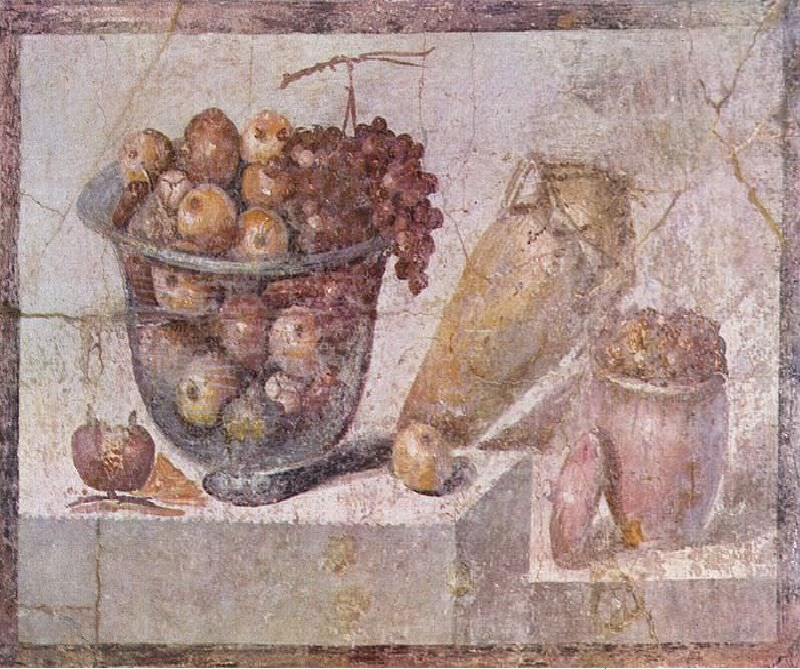
inromecooking.com 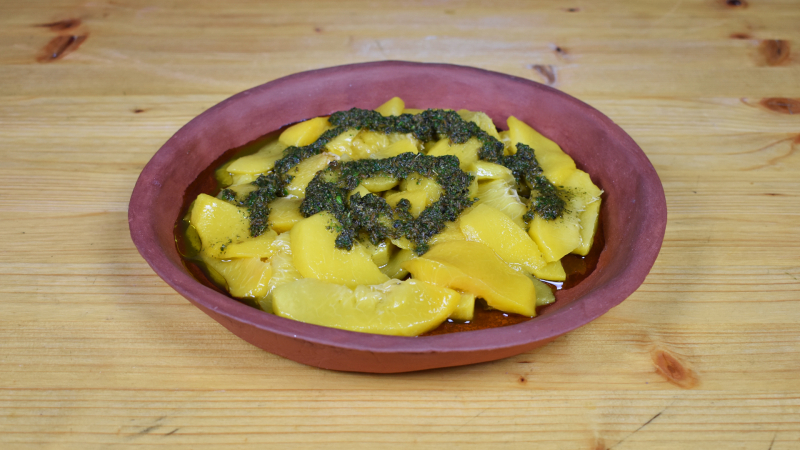
Ancient Roman Fruit Salads -historicalitaliancooking.home.blog -
Legumes, nuts, and dairy are among the most famous cuisines of Ancient Rome. Dried peas, fava beans (broad beans), chickpeas, lentils, and Lupines were the only legumes available. Chickpea cultivars known to the Romans included venus, ram, and punic. They were either roasted as a snack or simmered down into a soup. Apicius, a Roman cookbook, contains various recipes for chickpeas.
The ancient Romans ate walnuts, almonds, pistachios, chestnuts, hazelnuts, pine nuts, and sesame seeds, which they pulverized to thicken spicy, sweet wine sauces to serve on the side or over the meat as a glaze for roast meat and birds. Nuts were also used in savory pesto-like cold-cut sauces. Nuts were utilized in honey-sweetened pastries, tarts, and puddings.
The cheese was consumed, and its production was well-established by the time of the Roman Empire. It was included in the normal rations for Roman soldiers and was also popular among citizens. Cheese prices were set by Emperor Diocletian (284-305 CE). A number of Roman authors mention the production of cheese, as well as its quality and culinary applications: Pliny the Elder described cheese's dietary and medicinal uses in Book 28 of Historia Naturalis, and Varro in De Agricultura described the Roman cheesemaking season (spring and summer) and compared soft, new cheeses with drier, aged cheeses. Columella's dissertation on Roman agriculture, De Re Rustica, contains the most detailed description of Roman cheese-making.
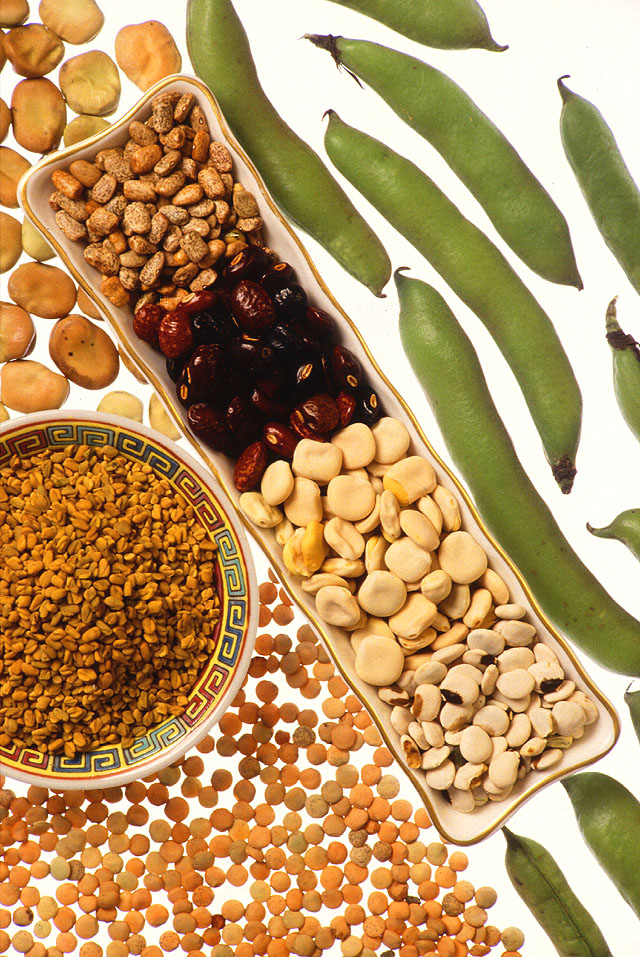
en.wikipedia.org 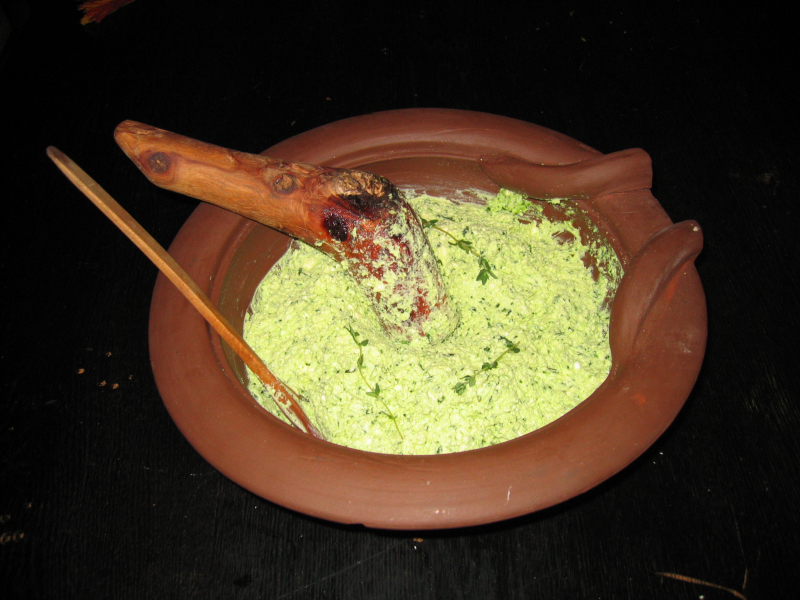
Moretum, a herb and cheese spread eaten with bread -en.wikipedia.org -
Garum is a fermented fish sauce that was used as a condiment in Phoenician, ancient Greek, Roman, Carthaginian, and later Byzantine cuisines. Liquamen is a similar concoction, and the two were sometimes used interchangeably. Although garum was most popular in the Western Mediterranean and the Roman world, the Greeks used it first.
Garum, one of the most famous cuisines of Ancient Rome, was ancient Rome's signature fish sauce. It was used as a flavoring substitute for salt, as a table condiment, and as a sauce. Garum, liquamen, muria, and allec were the four principal forms of fish sauce. It was prepared in various qualities from tuna, mullet, and sea bass. It might be flavored, for example, by mixing it with wine or diluting it with water (hydrogarum), a popular form among Roman soldiers, though the emperor Elagabalus claimed to be the first to serve it at public feasts in Rome. Garum sociorum was the most expensive garum, manufactured from mackerel (scomber) at the New Carthage fisheries in Spain and widely trafficked. Two congii (7 litres) of this sauce cost 1,000 sesterces, according to Pliny's Natural History. In the Early Empire, one thousand sesterces were worth 110 g of gold.
Garum was an important export product from Hispania to Rome, giving the towns some status. The garum of Lusitania (modern-day Portugal) was likewise highly valued in Rome, and it was carried directly from the port of Lacobriga (Lagos). An old Roman garum plant can be visited in central Lisbon's Baixa district. The distribution hub for Western Europe, encompassing Gaul, Germania, and Roman Britain, was Fossae Marianae in southern Gaul, located on the southern edge of modern-day France.
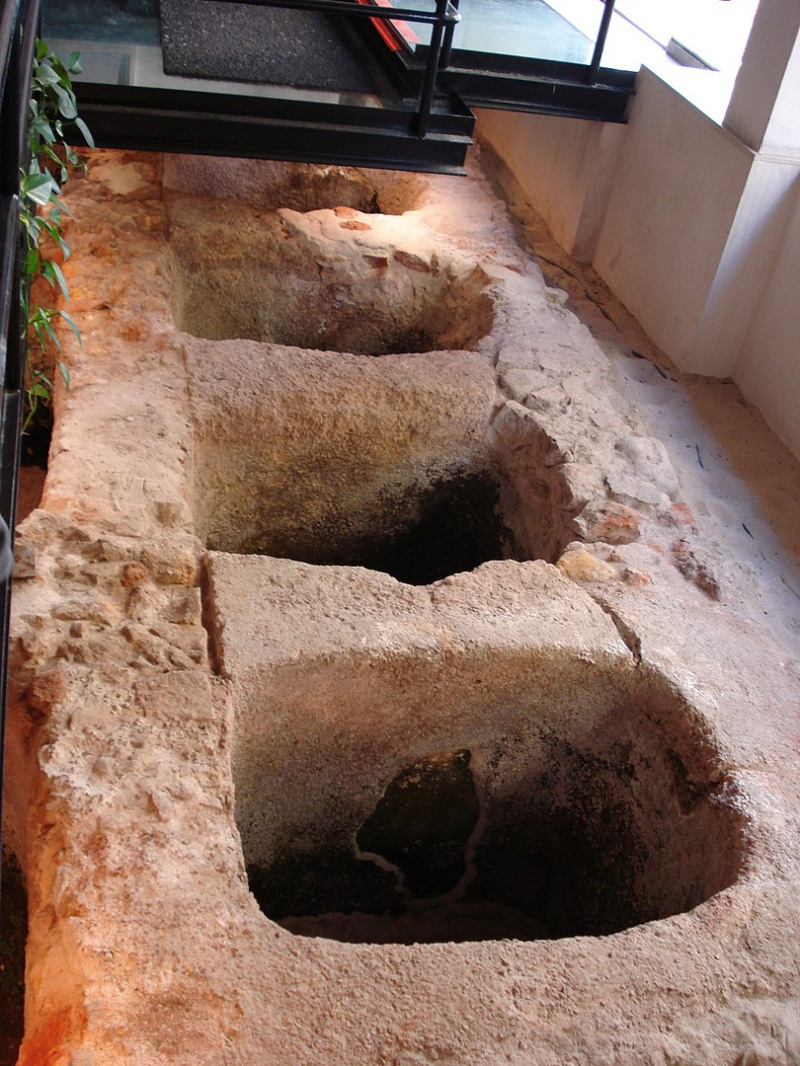
Ancient Roman garum factory in Portugal -en.wikipedia.org 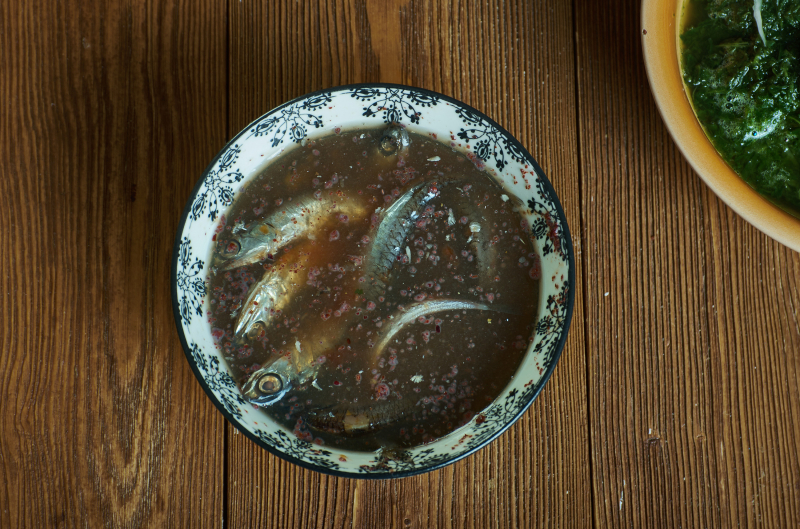
tasteatlas.com












